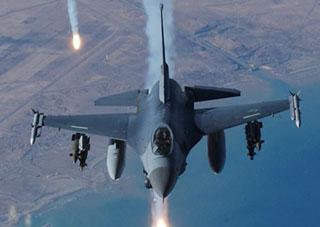
The Indian Ocean region off Durban is abuzz with activity as 11 ships of the navies of India, Brazil and South Africa engage in nautical exercises as part of the ongoing IBSAMAR Exercise. Indian Navy photo.
CAPE TOWN (PTI): India, Brazil and South Africa, the three emerging economies which form IBSA, are engaged in hectic naval activities along the South African coast as part of a joint exercise aimed at achieving inter-operability and fostering synergy among them during maritime emergencies.
The second edition of the biennial IBSAMAR (India-Brazil-South Africa maritime) exercise with India as the lead country this year had kicked off on September 13 off the coast of Durban with the participation of four Indian warships, two from Brazil and five from the South African navy and will conclude here on Monday.
Briefing reporters on board SAS (South African Ship) Amatola frigate, which is being docked at the port here, Rear Admiral R K Pattanaik, Flag Officer Commanding, Western Fleet, Indian Navy, indicated that the IBSAMAR exercises may be held in India or Brazil at a later stage.
However, he made it clear that the third edition of IBSAMAR to be led by Brazil will be held in 2012 on the South African coast. The first edition of the IBSAMAR was held in 2008 and it was decided then to conduct them in South Africa only.
Indian Navy officials said the three navies were able to achieve whatever they had planned to do during the exercises which were aimed at developing inter-operability among the three navies so that they could carry out joint operations during times of need in the high seas.
They said this year's exercise was much more complex than the previous one.
During the fortnight-long exercises, the three navies conducted anti-air and anti-submarine warfares and also visit-board-search-seizure operations and anti-piracy drills to promote greater inter-operability and foster synergy among them.
Naval warfare manoeuvres such as fuelling in mid-sea were also conducted as part of the exercises and the ships which were docked at ports attracted a number of people, including Indians living in South Africa.
Pattanaik said the exercises were a great success and all the three navies will benefit from them.
"The three significant democracies of three continents (Asia, Africa and South America) have conducted the exercises very successfully. A lot of planning had gone into the exercises and we have been able to achieve whatever we had planned," he said.
Echoing Pattanaik's views, Admiral W Higgs of the South African Navy said the IBSAMAR-II saw a significant growth from the first edition.
Higgs said: "These are the countries of a new, new world. The world of today and tomorrow which is exemplified in their navies. These navies are well-equipped and are modern."
The 11 ships and frigates of the three navies are now docked at the port here for public viewing and other social programmes.
Over 1,500 naval personnel, including women and 150 officers of the Indian Navy took part in the exercises that coincided with the five-day Africa Aerospace and Defence expo in Cape Town.
The ships that participated in the IBSAMAR-II are Mysore, Tabar, Ganga and Aditya of the Indian Navy; Amatola, Spioenkop, Drakensburg, Charlotte Maxeke, Queen Modjadji-I and Galeshewe of the South African Navy and the Brazilian Naval Ship Niteroi.
The exercises conducted in six phases -- three at the ports of Durban, Port of Elizabeth and Cape Town and the rest in the sea -- also saw the participation of SAAB's Gripen, Hawk and Impala aircraft of the South African Navy.
Pattanaik said without "political backing" from the three countries, the exercise would not have been a success and thanked the South African Navy for hosting them at three ports in the country.
On whether the exercises will be conducted in India or Brazil, he said: "I cannot rule out the possibility of them happening either in India or Brazil. As of now, it has been decided to conduct them in South Africa."
Asked whether the crew of the three navies faced any difficulties in communicating with each other, Pattanaik said there was no problem as officers and personnel understand the traditional operations.
Indian Navy officials on board the ships also said it was a good opportunity to re-establish and further relations with the navies of the African continent in areas of training and passage exercises.
They said the professional skills and experiences which were exchanged during the fortnight-long interaction would help in enhancing the cooperation and understanding the nuances of combating maritime threats of terrorism and piracy.
The destroyer INS Mysore and the frigates INS Tabar and INS Ganga are equipped with state-of-the-art weapons and sensors, while the replenishment ship INS Aditya is capable of sustaining the warships for prolonged durations at sea.
The Indian Navy has already been conducting formal exercises annually with several foreign navies for several years, such as the Varuna series with the French Navy, the Indra series with the Russian Navy and the Konkan series with the UK's Royal Navy.
The visit here also demonstrated the Indian Navy's blue water capability to deploy, operate and sustain a maritime task force well away from home for an extended duration.
 Previous Article
Previous Article













The Indian Air Force, in its flight trials evaluation report submitted before the Defence Ministry l..
view articleAn insight into the Medium Multi-Role Combat Aircraft competition...
view articleSky enthusiasts can now spot the International Space Station (ISS) commanded by Indian-American astr..
view article